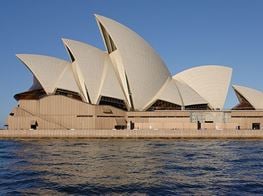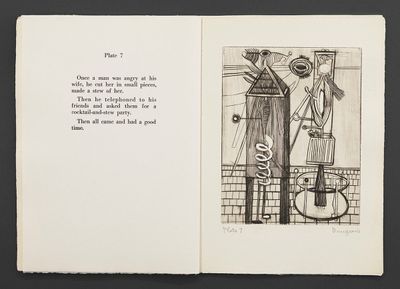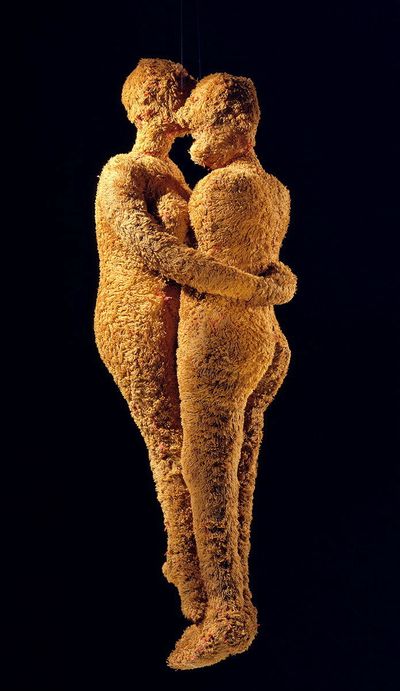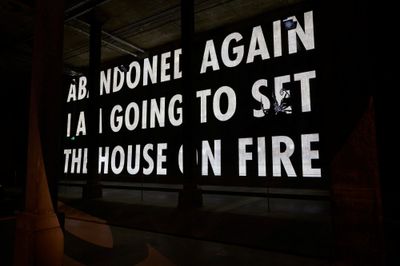Curator Emily Sullivan Shares 5 Stories on Louise Bourgeois
Louise Bourgeois' largest exhibition in Australia presents over 120 works, from the much-loved Maman to lesser-known sculptures, and a new Jenny Holzer commission based on Bourgeois' own writings.

Emily Sullivan, Assistant Curator, Contemporary International Art at the Art Gallery of New South Wales, Sydney. Photo: © AGNSW, Felicity Jenkins.
Titled Louise Bourgeois: Has the Day Invaded the Night or Has the Night Invaded the Day?, the Art Gallery of New South Wales exhibition positions the often opposing facets of Bourgeois' life and practice—from light and dark, love and rage, conscious and unconscious. These are mirrored in the exhibition's design, which moves from 'Day' in the above-ground galleries to the haunting landscape of 'Night' in the subterranean Tank.
Invited by Ocula Magazine, the exhibition's assistant curator Emily Sullivan shares stories behind five works in the exhibition that reveal Bourgeois' fearless exploration of human relationships.
1. He Disappeared into Complete Silence (1947)
Bourgeois described this illustrated book as 'a drama of the self'. Strange body-like buildings appear to lean, reach, and stand alone, while the accompanying parables allude to loneliness, despair, and communication breakdowns. In his introduction for the book, the literary critic Marius Bewley described the texts as 'tiny tragedies of human frustration'. The texts reveal Bourgeois' sharp wit and humour—tools she would soon deploy in her sculpture.
Bourgeois had a love of books and reading. In 1938, in a cordoned-off section of her family's tapestry gallery on the Boulevard Saint-Germain in Paris, she opened a small print shop where she sold drawings, paintings, illustrated books, and prints. There she met American art historian Robert Goldwater, whom she married and moved with to New York. Bourgeois would make many books in her career, including several fabric books made from her own clothing.
It was Bourgeois' hope that this book would lead to greater recognition of her art. While not commercially successful when first published, today it is considered a touchstone of her oeuvre.
2. The Good Mother (2003)
Bourgeois' iconic ode to her mother, the vast spider Maman (1999), currently reigns outside the Art Gallery of New South Wales—a formidable image of maternal protection in steel and bronze. But Bourgeois was equally effective with materials soft and worn. Inside the gallery, at the centre of a room dedicated to the theme of motherhood, kneels The Good Mother.
Made from fabric and thread, The Good Mother is redolent of the pulls and pushes of motherhood—a constant and delicate balance between giving and taking, sustaining and devouring. On losing her mother at age 21, Bourgeois said she 'fell apart'. She was ambivalent about own experience of motherhood: 'There I was, a wife and a mother, and I was afraid of my family. My mother had understood her role and was not afraid of the demands. I did not understand my role and I'm afraid I did not fill it.'
Made at age 91, at a time when Bourgeois seldom left her home, The Good Mother brings together universal themes of dependence and the limits of the body. It reminds us that even at this late stage of her life, Bourgeois' greatest dependence remained on art itself.
3. Has the Day Invaded the Night or Has the Night Invaded the Day? (2007)
Descending the spiral staircase into the darkened terrain of 'Night' in the Tank feels like falling down the rabbit hole. Nowhere is the strangeness of scale and distortion more apparent than Has the Day Invaded the Night or Has the Night Invaded the Day? In this larger-than-life mirror, bodies bend in unusual places and the works in the space appear to shadow each other.
Bourgeois' use of mirrors, both small and large, reveals her obsession with self-knowledge and the distances between people. In the reflections of mirrors, the space between people can seem closer—or further—than reality. By distorting reflections, it is possible to play with imperfections. Mirrors are also essential tools for looking back. Bourgeois said: '. . . reality changes with each new angle. Mirrors can be seen as a vanity, but that is not at all their meaning. The act of looking into a mirror is really about having the courage it takes to look at yourself and really face yourself.'
Ever the 'owner of [her] own trouble', Bourgeois was known to lift up small, handheld mirrors in the face of unwanted questions from critics and interviewers.
4. Couple (2001)
You will discover these entwined lovers—affectionately named 'the tawny couple' by colleagues at the AGNSW—suspended in the Tank, in a private corner befitting their tender but precarious embrace. Bourgeois' fabric couples allowed her to work through her lifelong fears of abandonment and separation. Their fabrication with needle and thread may be read as a direct physical expression of Bourgeois' emotional efforts to keep things 'whole'.
The subtlety of this couple's affection can be seen in their pressing feet and gentle touching. While the male figure appears helpless and unable to hold, the female is determined in her holding, creating a complete and unbreakable ring for the two of them. Bourgeois said, 'Nothing will separate them. It is a precarious and fragile state. That's expressed by the hanging on a thread. Despite all our handicaps, we hold onto each other. It is really the other that interests me. It is an optimistic view. Locked together, they spin for eternity.'
The pair's soft, fur-like material was sourced from Bourgeois' stash of old household fabrics. As someone who relied on memories of the past to make sense of the present, Bourgeois didn't let go of anything.
5. Jenny Holzer, Louise Bourgeois x Jenny Holzer (2023)
'You can stand anything if you write it down,' Bourgeois once said, referring to the words she found difficult to verbalise. Bourgeois' personal writings—ranging from secrets and memories to desires and threats—can be seen projected on the oil-stained walls of the Tank in the newly commissioned work by American artist Jenny Holzer, Louise Bourgeois x Jenny Holzer (2023).
Selected by Holzer, the writings are primarily from a period in Bourgeois' life when she was undergoing intense psychoanalysis following the death of her father. Experiencing deep depression at this time, Bourgeois temporarily ceased making sculpture, but wrote profusely.
On the relationship of Bourgeois' art to psychoanalysis, curator Philip Larratt-Smith described the 'difficult[y] to say where one activity ends and the other begins'. In both art and analysis, Bourgeois' goal was always to get to the heart of the problem.
Renowned for her light-and-text works, Holzer takes the intimate thoughts of Bourgeois as wife, daughter, mother, and artist, and sends them scrolling quietly up the walls. At other times, as though with a raised voice, they are writ large across the Tank's forest of columns. —[O]
















































































































































































